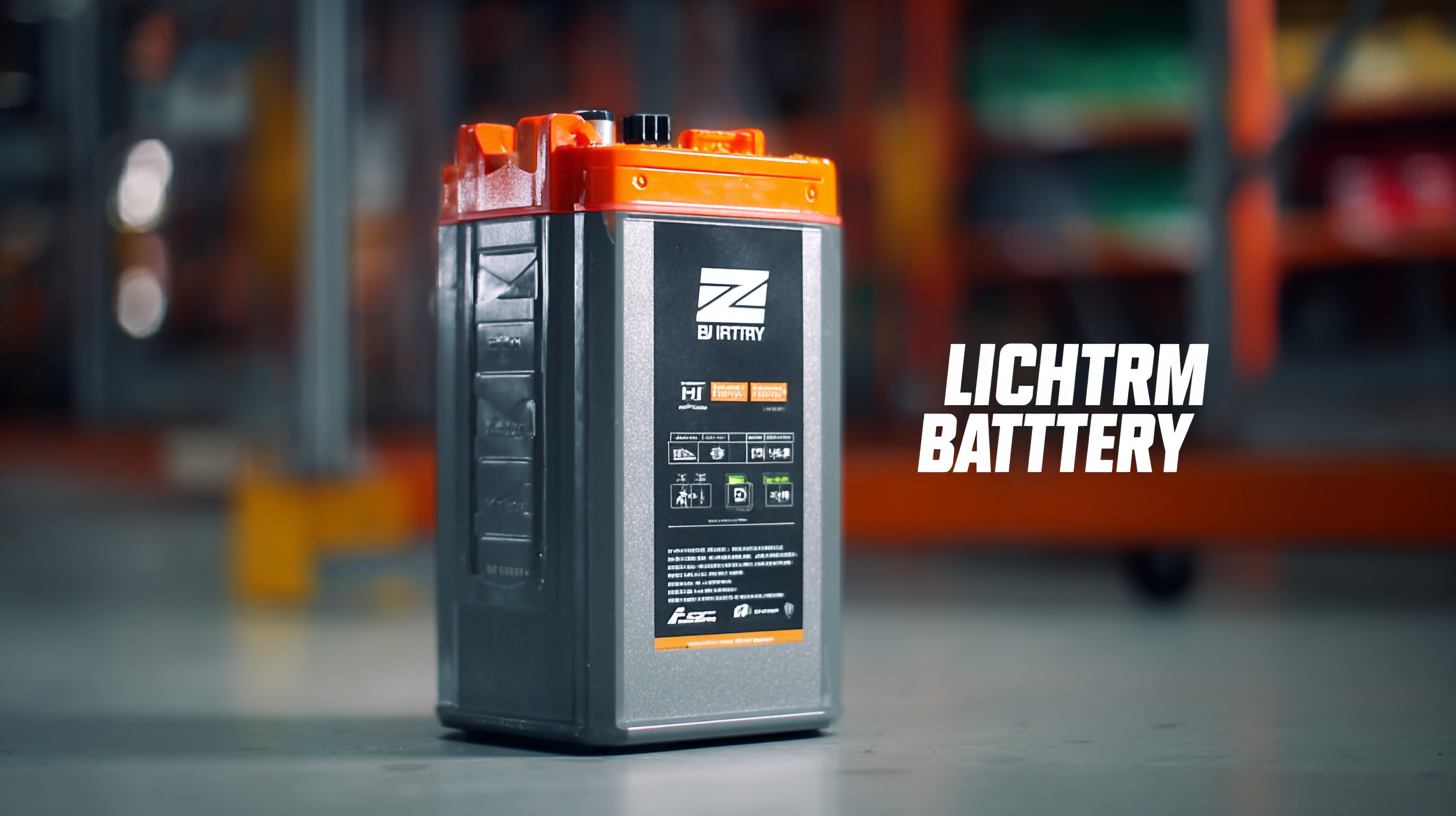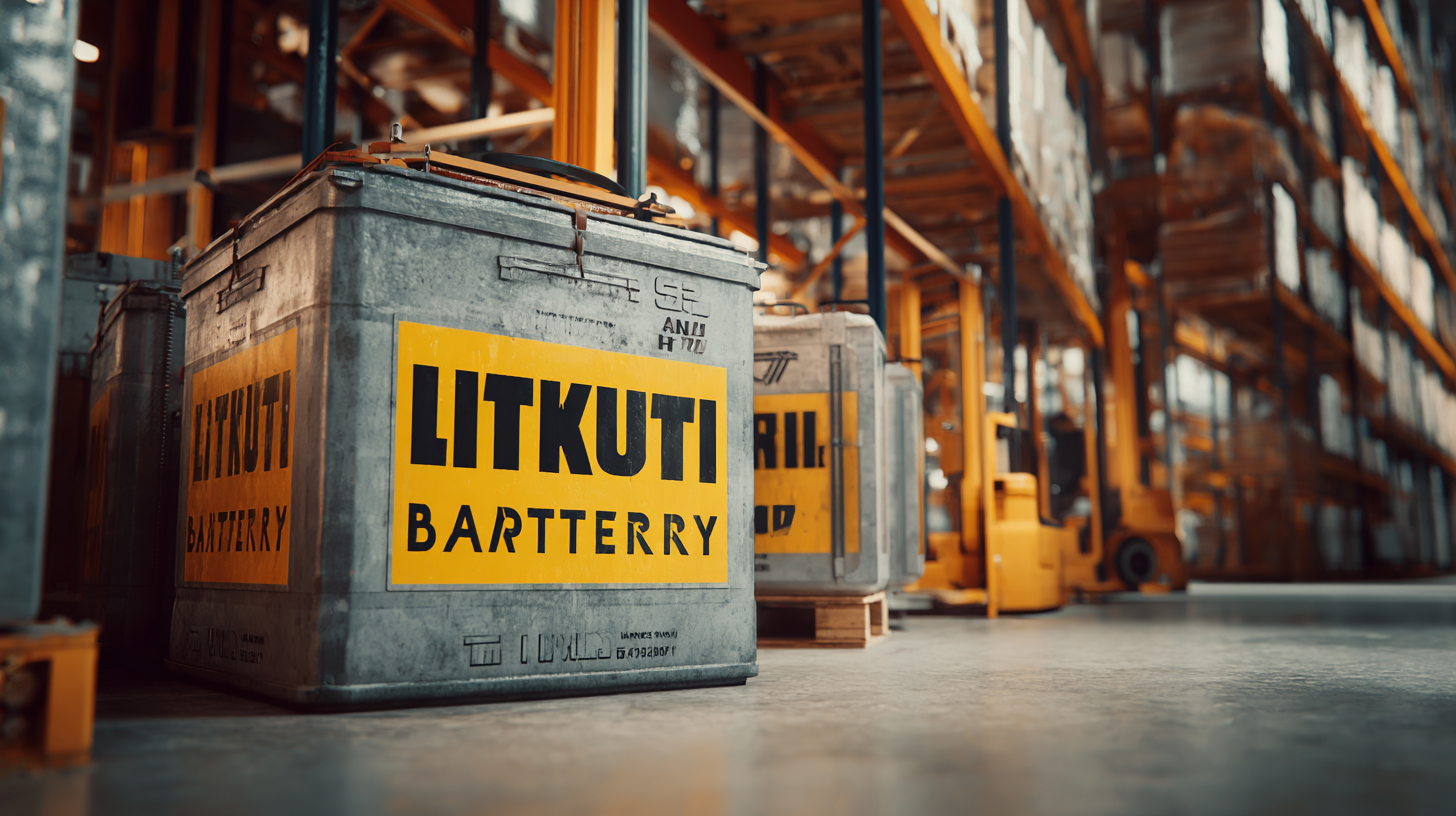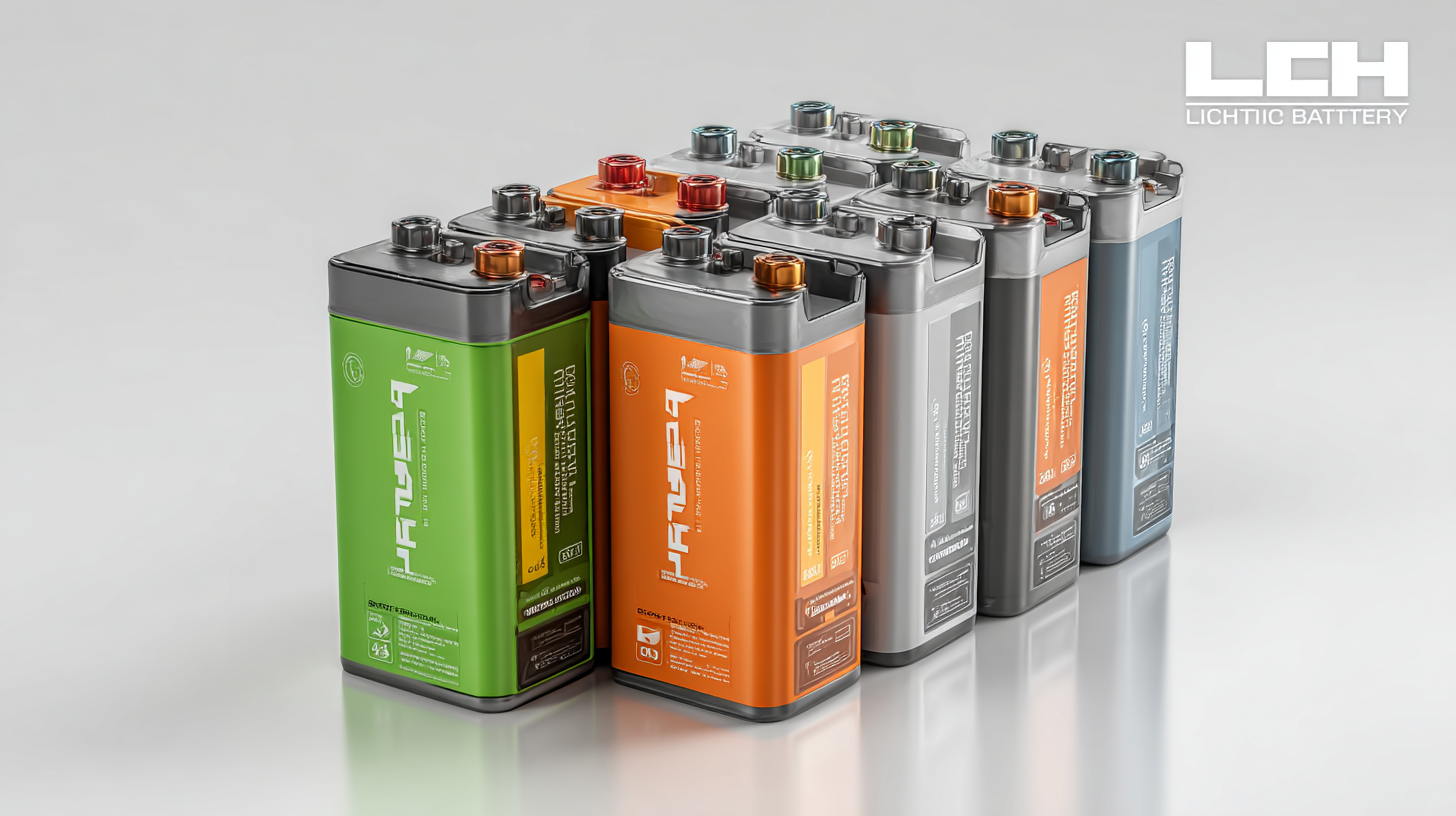- English
- Español
- Português
- русский
- Français
- 日本語
- Deutsch
- tiếng Việt
- Italiano
- Nederlands
- ภาษาไทย
- Polski
- 한국어
- Svenska
- magyar
- Malay
- বাংলা ভাষার
- Dansk
- Suomi
- हिन्दी
- Pilipino
- Türkçe
- Gaeilge
- العربية
- Indonesia
- Norsk
- تمل
- český
- ελληνικά
- український
- Javanese
- فارسی
- தமிழ்
- తెలుగు
- नेपाली
- Burmese
- български
- ລາວ
- Latine
- Қазақша
- Euskal
- Azərbaycan
- Slovenský jazyk
- Македонски
- Lietuvos
- Eesti Keel
- Română
- Slovenski
- मराठी
- Srpski језик

7 Secrets to Choosing the Best Forklift Lithium Battery for Your Business
In today's fast-paced logistics and manufacturing environments, selecting the right Forklift Lithium Battery is crucial for operational efficiency and cost management. According to a report by IBISWorld, the U.S. forklift battery market has seen a significant shift, with lithium-ion batteries gaining ground due to their efficiency and lower maintenance costs.

The advantages of lithium batteries, including longer lifespans — often exceeding 5,000 cycles — and faster charging times, make them an attractive alternative to traditional lead-acid batteries. Furthermore, a study from Grand View Research highlights that businesses can reduce downtime and operational costs by up to 30% through the adoption of lithium technology. As companies aim to enhance their productivity while minimizing expenses, understanding the nuances of after-sales service and maintenance costs associated with Forklift Lithium Battery systems becomes vital for making informed purchasing decisions.
Understanding Lithium Battery Basics for Forklifts
When it comes to powering forklifts, lithium batteries have become a game-changer in the material handling industry. Understanding the basic characteristics of lithium batteries is crucial for any business looking to optimize its operations. Unlike traditional lead-acid batteries, lithium batteries offer higher energy density, which translates to longer run times and less downtime associated with charging. This efficiency allows for more productive work hours and reduced operational costs, making it a smart investment for companies handling heavy loads.
Additionally, lithium batteries come with built-in Battery Management Systems (BMS) that ensure optimal performance and longevity. The BMS monitors various parameters such as temperature, voltage, and current, protecting the battery from overcharging and overheating. This not only enhances the safety of the forklift but also minimizes maintenance requirements, allowing businesses to focus on their core functions rather than equipment upkeep.
 As more companies transition to electric-powered forklifts, understanding these basic features of lithium batteries can significantly impact their choice and ultimately their bottom line.
As more companies transition to electric-powered forklifts, understanding these basic features of lithium batteries can significantly impact their choice and ultimately their bottom line.
Key Factors in Comparing Forklift Lithium Battery Brands
When it comes to selecting the best lithium battery for your forklift, understanding the key factors in comparing different brands is crucial. One of the primary considerations is the battery's performance in terms of energy efficiency. Lithium batteries have a distinct advantage over traditional lead-acid counterparts, often providing longer run times and quicker charging capabilities. As industries increasingly demand more efficient material handling solutions, opting for a high-performing battery can lead to significant productivity gains.

Another essential factor to evaluate is the durability and lifecycle of the battery. Look for models that offer robust engineering and construction, as they are more likely to withstand the demanding conditions of a warehouse environment. Additionally, consider the warranty and support offered by the manufacturer, as these can be indicative of the brand’s confidence in their product's longevity. With the forklift market projected to experience substantial growth in the coming years, ensuring you invest in a reliable lithium battery can position your business for success in a highly competitive landscape.
Cost-Effectiveness: Evaluating Long-term Savings
When evaluating the cost-effectiveness of lithium batteries for your forklift operations, it's crucial to consider long-term savings versus initial investment. Lithium batteries generally have a higher upfront cost than traditional lead-acid batteries, but their longevity and performance often justify the expense. These batteries can last up to four times longer, reducing replacement frequency and associated costs. It's essential to perform a thorough cost analysis that includes maintenance savings, battery lifespan, and potential performance enhancements to make an informed decision.
Tip 1: Conduct a life-cycle cost analysis. This will help you understand the total cost of ownership over the battery's lifespan, including purchase price, maintenance, and replacement costs. A detailed breakdown can provide a clearer picture of how much you’ll save in the long run.
Tip 2: Consider the charging efficiency. Lithium batteries have faster charging times and can be charged during breaks, allowing for more operational uptime. Evaluate how this efficiency translates into increased productivity, which can further contribute to overall cost savings.
By focusing on these factors, businesses can make strategic decisions that not only meet their immediate needs but also promote greater financial health in the long run.
7 Secrets to Choosing the Best Forklift Lithium Battery for Your Business - Cost-Effectiveness: Evaluating Long-term Savings
| Battery Type | Initial Cost ($) | Lifespan (Years) | Total After 5 Years ($) | Annual Maintenance Cost ($) | Total Cost ($) |
|---|---|---|---|---|---|
| Lithium-ion | 4,500 | 5 | 4,500 | 150 | 4,500 + (150 * 5) = 4,500 + 750 = 5,250 |
| Lead-acid | 3,000 | 2 | 6,000 | 300 | 3,000 + (300 * 5) = 3,000 + 1,500 = 4,500 |
| Nickel Cadmium | 5,000 | 5 | 5,000 | 200 | 5,000 + (200 * 5) = 5,000 + 1,000 = 6,000 |
| Lithium Iron Phosphate | 6,000 | 7 | 6,000 | 100 | 6,000 + (100 * 5) = 6,000 + 500 = 6,500 |
Assessing Performance: Runtime and Charging Speed
When selecting a lithium battery for your forklift, two critical factors to consider are runtime and charging speed. The runtime determines how long your operations can continue before a recharge is needed, directly impacting efficiency and productivity. A lithium battery with a longer runtime means fewer interruptions for charging, allowing your team to maintain a steady workflow. Look for options that provide at least an eight-hour shift on a single charge to maximize productivity, especially in high-demand environments like warehouses or distribution centers.
Charging speed is equally vital. Fast charging can significantly reduce downtime, enabling your forklift to be back in action in a shorter time frame. Opt for batteries that can recharge to at least 80% within one to two hours, allowing for quick turnarounds during breaks. Additionally, consider the opportunity charging capabilities, which enable forklifts to recharge during shorter periods of inactivity, ensuring that power is always available when needed. By carefully assessing both runtime and charging speed, you’ll ensure that you choose a lithium battery that supports your business’s operational needs effectively.
Safety Standards and Certifications for Lithium Forklift Batteries
When selecting a lithium forklift battery for your business, understanding safety standards and certifications is crucial. The industry is governed by various regulations designed to ensure the reliability and safety of these power sources. Key organizations such as Underwriters Laboratories (UL) and the International Electrotechnical Commission (IEC) provide vital certifications that evaluate the quality and safety of lithium batteries. A certified battery will have passed rigorous testing, ensuring it meets specific thermal, electrical, and environmental safety standards. This not only protects the equipment and operators but also enhances productivity and reduces downtime due to battery failures.
Additionally, businesses should consider the specific safety features that lithium batteries offer, such as built-in protection against overcharging, short-circuiting, and thermal runaway. These features are often highlighted in certification documents, making it essential to review the technical specifications provided by manufacturers. In an era where safety and efficiency are paramount, choosing a lithium forklift battery with recognized certifications can significantly mitigate risks and support sustainable operations. By prioritizing safety standards, companies not only safeguard their employees but also invest in the long-term viability of their operations.
Safety Standards and Certifications for Lithium Forklift Batteries
This chart illustrates the different safety standards and certifications met by various lithium forklift batteries in the industry, indicating their importance in ensuring safe and efficient operation in business environments.
